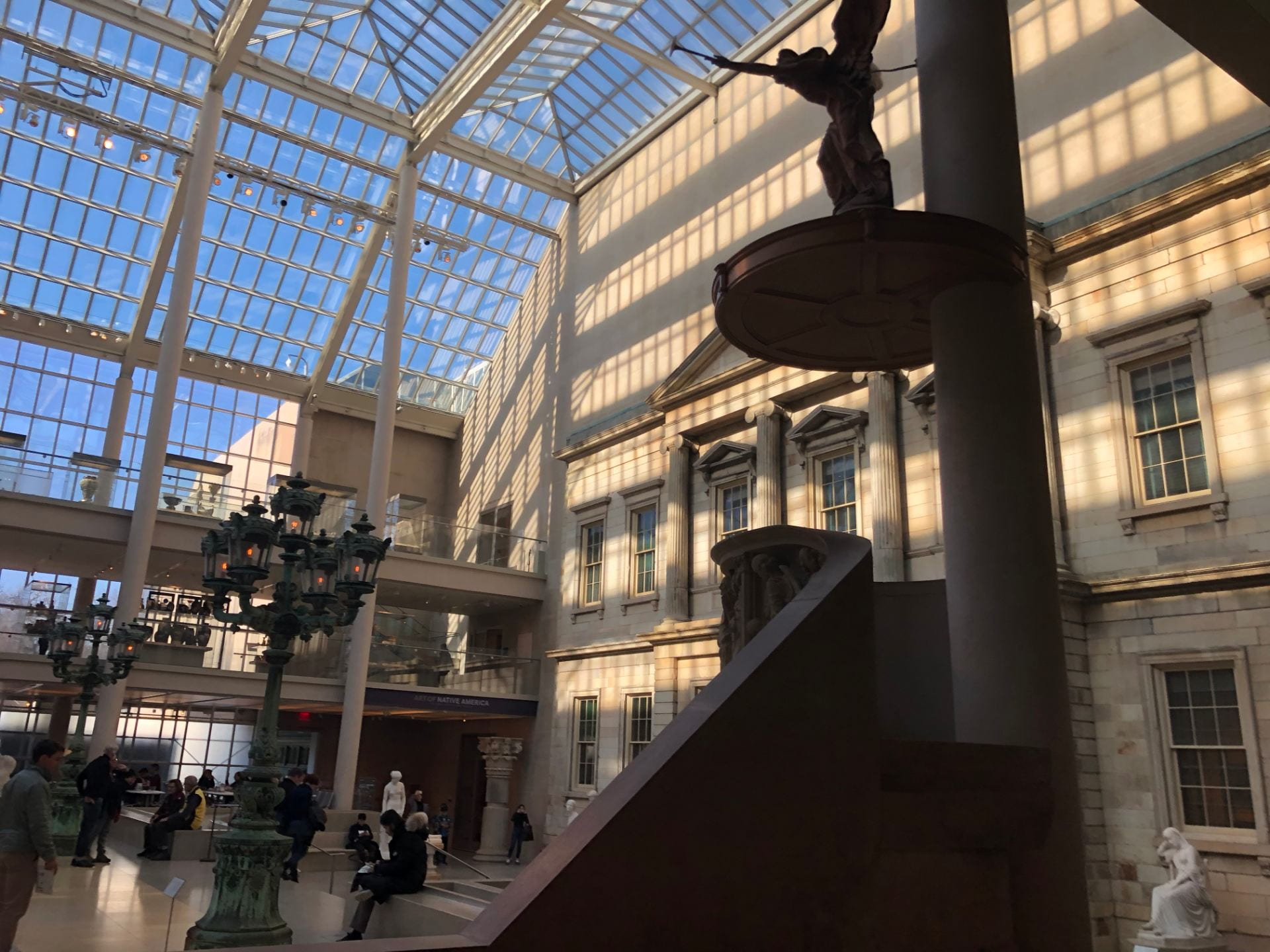 The Cat (1954) by Alberto Giacometti
The Cat (1954) by Alberto Giacometti
Found in Modern and Contemporary Art section.
Material: Bronze
Giacometti’s animal sculpture: His brother’s cat, shaped this way to express the cat’s lightning speed and thin body.
 Torso of a High General (4th century BC.)
Torso of a High General (4th century BC.)
Found in the Egyptian Art section
Material: Meta-greywacke
A great traditional sketch of a high general who’s name is unrecognized because of the broken sculpture parts.
 三國 鎏金銅龍頭勺 (Three Kingdoms period)
三國 鎏金銅龍頭勺 (Three Kingdoms period)
Found in Asian Art section
Material: Bronze
A spoon with a dragon head. Dragons represent the emperor in Ancient China.

Crib of the Infant Jesus (15th century) in South Netherlandish
Found in Medieval Art section
Main Media: Wood
Full of religious representations, this crib is utilized for female believers to make vows in front of.
Details from Met website:
My Observation:
This object appeared different when I first see it and when I look at all the little details.
When I first saw it, I saw how everyone sees it, a crib, a bed for little kids, maybe from a royal family. But when I look closely, I started to see signs and imagery.
The whole architecture of this bed, including angels statues, the pointy arches, and the angular surface reminds me very much of Christian church from the 12th century. It’s like the entire bed is church architecture, spreading a strong religious message.
Then I started to see this bed as an instrument with all the bells on the top, windows as the airholes. It stably stands on the ground with four feet, with repetitive patterns all over, similar to an ancient piano, or a harp.
Following the observation, I went back to the idea of a baby bed, and it pushes me to another direction– a dollhouse. This is a place where the baby can sleep with all the imaginary characters he/she created. Four angels looking down at the kid as the guardians of this dream house.
Furthermore, when I focus just on the architecture of this object, small connections started to be constructed, for example how this crib is built in a way that not structurally but visually protects the child. There is no fence on the side; the space inside is claustrophobic; the architecture and the material are sharp; the decorations on the pillow and the bedsheet are not comfortable for a vulnerable little soft baby. However, it visually reflects a sense of protection– the bed is surrounded with repetitive patterns. Angles, bells, arches, and bedposts are structurally arranged to surround the baby. On head and tail of the bed, carved using negative space in wood these holy characters protect the head and feet of the baby. The golden decoration protects him/her with wealth. The windows on the pointy arches look like candles or little dolls. All these details visually directly associate with the art style and religious influence, this is no longer a crib for me, and I believe it was not used as one.
KEYWORDS: Religion; Wealth; Decorative; Holy; Security; Motherhood; Storytelling; Architecture; Gothic; Rythm.
My Sketch:
All information is found on https://www.metmuseum.org/art/collection
I choose this resource because of its well-recorded photography that can get me to “observe” more details I could not see with glass in between. And also I can find the object immediately through its searching engine with all the trustworthy information I needed.







